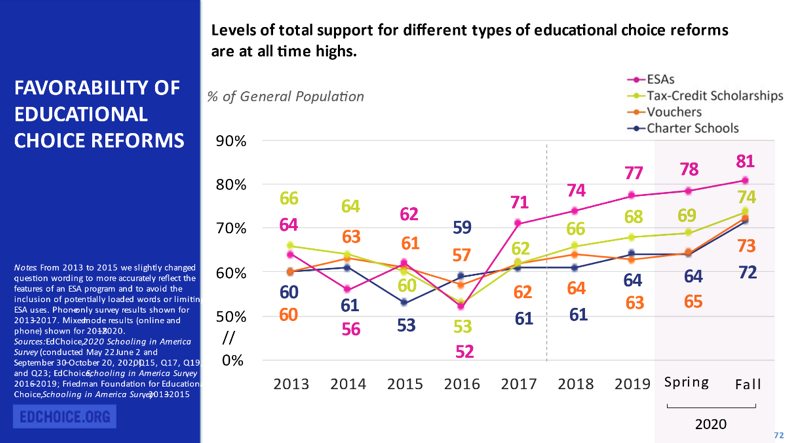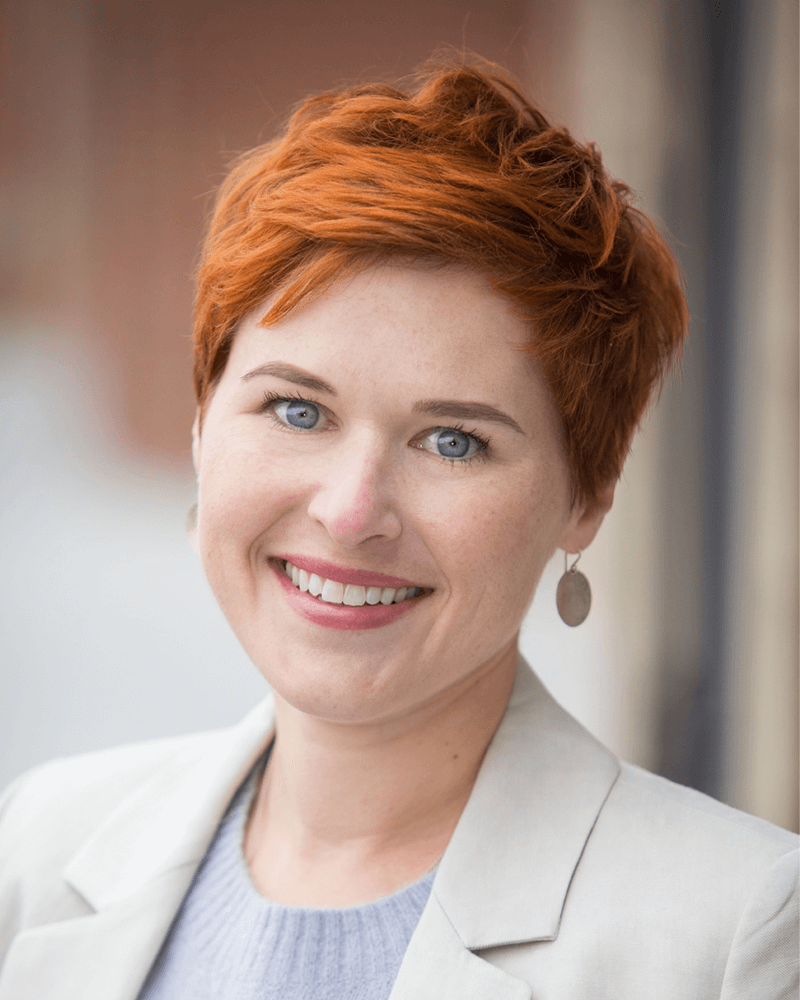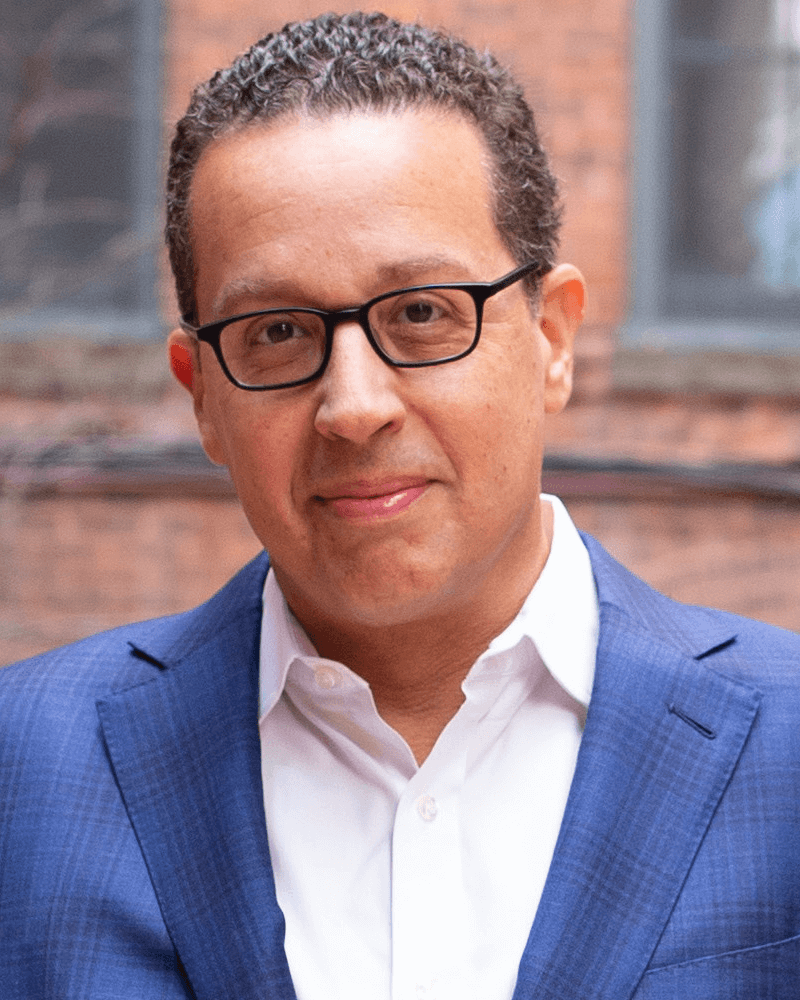
Friday, April 30, 2021
"100 million Americans are fully vaccinated."
White House COVID-19 Coordinator Jeff Zients: "Today, 100 million Americans are fully vaccinated."
Full video here:
Discover the C-SPAN Video Library at
Download our App
C-SPAN: Created by Cable in 1979. Offered as a […]
Read More
Child Breast
“2020 Census shows U.S. population grew at slowest pace since the 1930s” is the headline the Washington Post placed over its report of “decreased fertility rates and lagging immigration.”
In the Summer 2019 issue of Education Next (“The Baby Bust Goes to School”), Michael J. Petrilli wrote about the demographic decline and what it might mean for education:
Perhaps there are a few silver linings.
For one, fewer students could mean needing fewer teachers, giving districts a chance to be more selective in those they hire. …
Second, districts faced with school closures could also make smarter choices about which schools get to stay open. …They might also be able to afford to spend more money per pupil, since there will be fewer pupils overall.
The post Baby Bust appeared first on Education Next.
By: Education Next
Title: Baby Bust
Sourced From: www.educationnext.org/baby-bust/
Published Date: Thu, 29 Apr 2021 18:43:48 +0000
News.... browse around here
Bill Gates has not purchased Telegram


An Instagram post includes a screengrab of what appears to be a report from US TV network Fox News, claiming Bill Gates had bought the messaging app Telegram.
The text above the screengrab states: “Bill Gates has just purchased the Telegram app in order to retain control of what information people can share, think and research.” It includes a broken link to a YouTube video.
A caption below the image of a news reader states “600 MILLION DOLLARS DEAL BILL GATES BUYS TELEGRAM”.
Mr Gates has not bought Telegram. We have contacted both Telegram and the Bill & Melinda Gates Foundation to confirm this, but both parties have previously confirmed to fact checkers at Reuters and AFP that the Gates’ have no commercial interest or ownership of Telegram.
As those reports also state, Fox News has never reported such a story and the photo appears to be digitally manipulated. Fact checkers at AFP did a reverse image search of the image in the post, tracing it back to a 2020 Fox news report on an unrelated topic.
Pavel Durov, the founder and chief executive of Telegram, has previously insisted Telegram would not be sold.
Read more: https://www.northdenvernews.com

News…. browse around here
- 3D Comfort mask design
- Convenient earloop design
- Comfortable stretch fabric for tight fit
- Easy to put on & remove
- Color: white
- Materials: 3-layer melt-blown non-woven PPE
- Product dimensions: 1"H x 8"L x 5"W
- 3D Comfort design
- KN95 PRC Standard (Similar to NIOSH N95)
- CE 0194
- FFP2 - EN149 Filtration Level
News.... browse around here
Testing, SpaceX, and also the Pursuit for Consensus

In a thought-provoking piece in the Hechinger Report a couple weeks ago, IES director Mark Schneider and Schmidt Futures honcho Kumar Garg made a compelling case for a revolution in education testing. The authors correctly explained that practically nobody likes today’s assessments, they’re expensive, and many people would like to do away with them altogether. Then they explained why abolishing testing would be a really bad idea, as it would deny valuable information to both educators and policymakers and would scrap a major tool for pursuing equity.
Rather than crusading against testing, say Schneider and Garg, we need the equivalent of a “SpaceX” for assessment—a reimagining, redesigning, and reconstructing of how this can and should be done in the mid-twenty-first century.
They’re right—right that this needs to happen, and right that “improvements are available now.” In particular, a suite of technologies that are already widely used in some private-sector testing can and should be embraced by state and national assessments, as well as the private tests that aren’t yet making maximum use of them. Artificial intelligence can generate test questions and evaluate student responses. “Natural language processing” illustrates the kind that can appraise essay-style responses, thus helping to liberate testing from multiple-choice items that can be fed through a scanner. Computer-adaptive testing (already a feature of the Smarter-Balanced coalition, though constrained by ESSA’s insistence on “grade-level” testing) saves time, reduces student frustration, and yields far more information on what kids do and don’t know, particularly at the high and low ends of the achievement distribution.
Schneider and Garg itemize several necessary elements of the paradigm shift they seek:
First, we should strive to set ambitious goals for where assessment innovation can go…. Second, government agencies and research funders should invest in advanced computational methods in operational assessments…. Third, fostering talent is critical. New testing designs will require new test researchers, developers, statisticians and AI experts who think outside the box…. But, most importantly, we must recognize that the status quo is broken. We need new thinking, new methods and new talent.
That’s not the whole story, of course. There are plenty of other needs, mostly involving the surmounting of present-day obstacles. Government bureaucracies are set in their ways. Procurement systems are ossified and formulaic. Digital divides are real. And the more tests rely on technology, the greater the risk that those divides will worsen the inequalities that the tests reveal.
Moreover, all sorts of state and federal laws and regulations are involved. The intersection of assessments with academic standards and ESSA-driven accountability regimes is genuinely complicated. And then there’s the matter of “trendlines,” the desire to know how next year’s assessment results compare with last year’s, so that we can calculate growth, operate our accountability system, know whether gaps are closing and reforms are working, etc.
Those aren’t trivial considerations, especially in long-running testing programs such as the National Assessment of Educational Progress. Big changes in how tests are constructed and conducted are certain to collide with the barriers noted above, but also run a high risk of forcing trend lines to start anew.
Schneider and Garg say these challenges are worth tackling. That it’s already a time of flux, and agitation in the testing realm may well mean they’re right and the time is at hand. On the other hand, as former Achieve major domo Michael Cohen says, the time may not be right “for a major effort to create better tests because nobody wants to talk about tests. People are tired of standards, tests, and accountability. They just don’t want to deal with it anymore.”
It surely won’t be easy to reach anything resembling consensus across the education field, not in these politically schismatic times when people want so many different things from tests, and want to deploy and restrict them in so many different ways—or abolish them altogether.
Dissensus is visible today among the twenty-six members of the National Assessment Governing Board (NAGB) as they struggle with replacement of the twelve-year-old framework that underlies NAEP’s reading tests. Intended to take effect with the 2026 assessment cycle, the proposed new framework that emerged from an extensive attempt to “vision” the future of reading has prompted much controversy. In a scathing review of last year’s draft, David Steiner of Johns Hopkins and Mark Bauerlein of Emory suggested that the new framework would, in effect, define deviancy down by masking the problem of weak background knowledge that compromises reading comprehension among many youngsters, particularly those from disadvantaged homes. They also spotlighted the great risk that the proposed new framework would break NAEP’s reading trendline, which extends all the way back to 1992.
Whether the changes subsequently made in the proposed framework are substantive or cosmetic remains a topic of intense debate within the governing board, which over the decades has been celebrated for its capacity to reach consensus on important decisions. Whether that can happen next month when NAGB is supposed to adopt the new reading framework remains to be seen.
The point here, however, is not about NAEP or NAGB. It’s about the difficulty of achieving consensus in today’s testing arguments—and the difficult trendline issue, which is a big deal not only for NAEP, but also for many state assessments, as well as private-sector testing efforts such as SAT, ACT, and NWEA.
Statistical and psychometric legerdemain sometimes makes it possible to “bridge” or “equate” scores across a major shift in testing methods, content, or scoring arrangements. That’s how the NAEP reading trendline, for example, survived the installation of a new assessment in 2009, and how the College Board has been able to publish equivalency tables each time it has “re-centered” the SAT.
Perhaps such bridges can span the divide between today’s testing systems and the “SpaceX” version that Schneider and Garg envision. Or perhaps we must steel ourselves to sacrificing trend data in pursuit of other benefits that the SpaceX version would bring. It’s a close call—and an issue that will make consensus-seeking even harder, particularly in governmental assessments, such as those that states are required by ESSA to conduct, as well as NAEP itself.
A revolution in testing is less fraught—at least less political—in privately-operated programs, especially the kind that are more commonly used for formative and diagnostic purposes rather than tied to school accountability. Reconceptualizing those tests and their uses might yield additional gains. If more schools deployed them regularly and painlessly, then used them both for instructional decisions by teachers and to keep parents posted on their children’s learning gains and gaps, perhaps there’d be less need for and pressure on end-of-year accountability testing. Maybe it could happen less frequently or, NAEP-style, involve just a sample of students and schools.
Yes, it’s time for some fresh thinking! Are you listening, Elon Musk?
Chester E. Finn, Jr., is a Distinguished Senior Fellow and President Emeritus at the Thomas B. Fordham Institute. He is also a Senior Fellow at Stanford’s Hoover Institution.
This post originally appeared on the Fordham Institute’s Flypaper blog.
The post Testing, SpaceX, and the Quest for Consensus appeared first on Education Next.
[NDN/ccn/comedia Links]
News.... browse around here
Pictures of embellished space are not the Downing Street refurbishment


In the midst of discussions around the spending on the refurbishment of the Prime Minister’s Downing Street flat, an image of a brightly decorated room has been widely shared on social media, including by Labour MP David Lammy. Posts either say, or seem to imply, that the room may be part of the re-decoration of the Downing Street flat. Certainly, social media users seem to have made this association judging from the comments beneath the posts.
This is not a photograph of the newly decorated Downing Street premises. Instead, the image seems to be of a room from interior designer Lulu Lytle’s own home.
Ms Lytle is a co-founder of interiors company Soane Britain, and the room was pictured on the company’s Instagram account in 2017. The room is also featured in a YouTube video in 2019 where Ms Lytle talks through the decorative design choices in her London home.
While it has been suggested that Ms Lytle has been an inspiration for, and perhaps designed the revamp, there is no suggestion that this picture is a reflection of the actual rooms in the newly decorated Downing Street flat.
Read more: https://northdenvernews.com/category/latest/

News…. browse around here
- 3D Comfort mask design
- Convenient earloop design
- Comfortable stretch fabric for tight fit
- Easy to put on & remove
- Color: white
- Materials: 3-layer melt-blown non-woven PPE
- Product dimensions: 1"H x 8"L x 5"W
- 3D Comfort design
- KN95 PRC Standard (Similar to NIOSH N95)
- CE 0194
- FFP2 - EN149 Filtration Level
News.... browse around here
Thursday, April 29, 2021
Betsy Appleseed and also College Selection

Betsy DeVos must be quietly enjoying her retirement from public office. After resigning in protest against presidential actions during the closing days of the Trump Administration, she is beginning to see the fruits of her steady advocacy of school choice throughout her term in office. When she took office in 2017, public support for choice took a nosedive, as opponents used her confirmation as a marvelous opportunity to mobilize public opinion against any policy that might take money away from the public school. Charter advocates began fighting among themselves, and the choice movement in general seemed in disarray at the very time it had access to the highest levels of the federal government. I discussed the challenges and some ways to address them in a report, “Toward Equitable School Choice,” issued as part of the Hoover Education Success Initiative.
But within three months of the beginning of the Biden Administration, school choice is rebounding. As I write in an oped in The Wall Street Journal, teacher unions are on the defensive and state legislatures are enacting choice initiatives and expansions in Arkansas, Florida, Indiana, Kentucky, Montana, West Virginia, and elsewhere.
Excellence in Education, the American Federation of Children (Betsy DeVos’s home base) and the EdChoice think tank all deserve the applause of choice advocates for their hard work, but the driving force seems to be public dismay with the public school response to Covid-19. Here is a graph from an EdChoice polling effort that documents the change in opinion that has been happening of late. Pay less attention to the level of support, as that is affected by the wording of the question. Focus on the trend line, which is uniformly upward bound across the various choice options under consideration. Betsy DeVos must feel like Johnny Appleseed. When seeds are scattered, predators eat most of them and saplings take time to root, but some trees blossom and yield good fruit.

Paul E. Peterson is the Henry Lee Shattuck Professor of Government and Director of the Program on Education Policy and Governance at Harvard University, a Senior Fellow at the Hoover Institution at Stanford University, and Senior Editor of Education Next.
The post Betsy Appleseed and School Choice appeared first on Education Next.
By: Paul E. Peterson
Title: Betsy Appleseed and School Choice
Sourced From: www.educationnext.org/betsy-appleseed-and-school-choice/
Published Date: Thu, 29 Apr 2021 20:03:07 +0000
News.... browse around here
House Speaker Nancy Pelosi: "It's remarkable, actually, I say immodestly."
House Speaker Nancy Pelosi: "It was the first time two women, the Vice President of the United States and the Speaker of the House, sat behind the president as he delivered his address to the nation...It's remarkable, actually, I say immodestly."
[…]
Read More
Supreme Court Listens To Disagreement in Trainee Speech Situation

On Wednesday, the Supreme Court heard what had a chance to be the most consequential student speech case since its 1969 ruling in Tinker v. Des Moines. Controversies over whether schools can punish off-campus speech have been simmering for years, going back deep into the mists of internet time and involving now-fossilized platforms like Myspace. Lower courts have split over the issue—precisely, whether Tinker’s rule that schools can regulate student speech that could substantially disrupt the educational process applies beyond the schoolhouse gate—and the Supreme Court has refused to address it. This case, Mahanoy Area School District v. B.L. could allow the Supreme Court to provide some clarity for both schools and students.
If oral argument is any indication, clarity might not be forthcoming. The justices did all seem concerned about allowing schools to regulate off-campus speech that would normally be protected by the First Amendment. The court seems unlikely to accept the school district’s arguments which, despite its claims to the contrary, would give educators broad latitude to regulate any speech “directed” at the school. However, several justices seemed to think that the facts of this case don’t lend themselves to the creation of a general rule. There did not seem to be a split along the conservative/liberal division often seen in contentious cases.
Previously, the court has ruled that schools can only punish student speech that violates the rights of others, disrupts the educational process, is lewd or lascivious, is school sponsored, or is pro-drug. But those rulings only applied to speech in school. The internet complicates the issue. Teenagers can now open their digital mouths and have a vast online audience, not just a few friends at a weekend party, hear what they have to say.
The controversy in Mahanoy emerged when high school sophomore Brandi Levy was suspended for a year from her junior-varsity cheerleading squad for a vulgar image she sent via Snapchat after being denied a chance to try out for the varsity squad. Snapchat is supposed to protect juveniles from thoughtless decisions by allowing the quick deletion of their photos and posts. As Levy learned, though, social media is forever, even with Snapchat. Someone took a screencap of Levy’s Snap of herself and a friend holding up their middle fingers, with the words “f— school f— softball f— cheer f— everything” superimposed on the image. The image inevitably made it to her coach, leading to her punishment. Levy challenged her suspension in federal court and won at both the district and appellate level.
At oral argument the rural Pennsylvania school district’s lawyer, Lisa Blatt, argued that Tinker’s holding that schools can regulate disruptive speech should be expanded to apply to off campus speech if the speech is “directed” at the school. In fact, she argued that this has been the operative rule ever since Tinker even though the court has never endorsed it. The location of student speech, Blatt argued, doesn’t matter because the internet is “ubiquitous.” This claim won’t succeed. Justice Breyer pointed out that the facts of this case seemed to show that Levy’s speech didn’t cause a substantial disruption in school. She used vulgar speech, but Breyer worried that, if vulgarity is the standard, schools would be punishing students all the time given the vocabulary choices of adolescents. Justice Alito was concerned by the idea that schools should be able to punish speech that “targets the school,” as Blatt contended. That would not provide a “clear rule” that could be implemented without being abused by schools. The district believed that everything should be context dependent, which would provide wide latitude for schools to decide what counted as school related. Justice Gorsuch pointed out that, while the school district said that it would not be able to punish political and religious speech, the district’s position would in fact allow educators to do just that if they decided that the speech would cause a substantial disruption.
While the district’s proposed standard seems unlikely to be accepted by the court, it’s not clear that Levy’s will be accepted either. Her lawyer, David Cole of the American Civil Liberties Union, argued that the standard should be whether the student is under the school’s supervision. Schools should not have the authority to intervene unless the speech falls into an already unprotected category such as a true threat. This line is clear, but some justices seemed unenthusiastic about drawing it. Justice Breyer, for instance, said “I’m frightened to death of writing a standard.” Justice Alito even floated the idea of dismissing the case as improvidently granted since the facts might not lend themselves to “address[ing] the broad issues” of student online speech, particularly since it involved an extracurricular activity and not the regular school environment.
The only certainty after oral argument is that the court will not rule in favor of the school district. Too many justices thought that the punishment was disproportionate to the offense or would allow schools to punish clearly protected speech. Justice Kavanaugh pointed out that Levy just blew off steam like millions of other kids who get cut from a team. However, the eventual decision, one fears, will be sufficiently opaque that it will fail to give much guidance to schools. Overall, this case will be a clear victory for Levy but perhaps not clear enough to prevent future litigation.
Joshua Dunn is professor of political science and director of the Center for the Study of Government and the Individual at the University of Colorado Colorado Springs.
The post Supreme Court Hears Argument in Student Speech Case appeared first on Education Next.
[NDN/ccn/comedia Links]
News.... browse around here
Picture of 2018 anti-Brexit march mislabelled as revealing 2021 anti-lockdown march

An aerial image of a mass of people near Hyde Park Corner in London has been shared widely on social media, with people claiming it shows the anti-lockdown protest on 24 April 2021.
This is false. While other images being shared of crowds are from protests at the weekend, this particular one is not. The image is actually from ITV’s coverage of the anti-Brexit People’s Vote march which took place in October 2018.
News and Views: https://thecherrycreeknews.com/

News…. browse around here
- 3D Comfort mask design
- Convenient earloop design
- Comfortable stretch fabric for tight fit
- Easy to put on & remove
- Color: white
- Materials: 3-layer melt-blown non-woven PPE
- Product dimensions: 1"H x 8"L x 5"W
- 3D Comfort design
- KN95 PRC Standard (Similar to NIOSH N95)
- CE 0194
- FFP2 - EN149 Filtration Level
News.... browse around here
Sen. Tim Scott Delivers Republican Response
Sen. Tim Scott delivers the Republican Response to President Biden's address to a Joint Session of Congress.
Discover the C-SPAN Video Library at
Download our App
C-SPAN: Created by Cable in 1979. Offered as a public servi […]
Read More
Conservative support may have fallen– but not when the Guardian says it did


An article in the Guardian this week claimed that public support for the Conservative party has fallen after recent news reports about the alleged conduct of senior people in government.
The article says: “An Ipsos Mori poll found that the party’s approval ratings had been slashed by five percentage points since last month, following weeks of revelations about lobbying, the refurbishment of the prime minister’s flat, and the latest row with his former key adviser, Dominic Cummings.”
In fact, these poll results are based on interviews that took place between 16 April and 22 April this year.
This means that people’s opinion of the Conservatives could have been influenced by the David Cameron lobbying stories or the Downing Street flat refurbishment stories, which were already being reported in March, but not by the Dominic Cummings disagreement, which only became public on 23 April.
Mr Cummings left his job in Downing Street last year after reported disagreements with other people working there. On 21 April this year, the BBC reported what it said were a series of leaked text messages between the Prime Minister and the entrepreneur, Sir James Dyson. On 23 April, newspapers reported that the Prime Minister believed Mr Cummings had leaked the messages—but Mr Cummings denied this, and made other accusations about the Prime Minister, in a blog later that day.
earn more: https://thecherrycreeknews.com/

News…. browse around here
- 3D Comfort mask design
- Convenient earloop design
- Comfortable stretch fabric for tight fit
- Easy to put on & remove
- Color: white
- Materials: 3-layer melt-blown non-woven PPE
- Product dimensions: 1"H x 8"L x 5"W
- 3D Comfort design
- KN95 PRC Standard (Similar to NIOSH N95)
- CE 0194
- FFP2 - EN149 Filtration Level
News.... browse around here
Wednesday, April 28, 2021
There were nowhere near one million people at the anti-lockdown march


Following the anti-lockdown protest in London on Saturday 24 April, claims that up to one million people attended have been shared widely.
Crowd sizes are difficult to estimate accurately. Nevertheless one million is an implausible estimate.
One video shows the entire procession pass along Victoria Embankment and under Waterloo Bridge in around 50 minutes.
For one million people to have been part of this procession, around 330 people would need to pass through every second. The video shows that, even at its densest, the procession was not moving nearly this many people through.
Just to give you an idea of how implausible this estimate is, it would be generous to say the march had an average density of about one person per square metre.
At that density, a million people would cover around 56 kilometers (35 miles) of road the width of Victoria Embankment, equivalent to the distance from Waterloo Bridge to the outskirts of Luton.
Read more: https://thecherrycreeknews.com/category/latest/

News…. browse around here
- 3D Comfort mask design
- Convenient earloop design
- Comfortable stretch fabric for tight fit
- Easy to put on & remove
- Color: white
- Materials: 3-layer melt-blown non-woven PPE
- Product dimensions: 1"H x 8"L x 5"W
- 3D Comfort design
- KN95 PRC Standard (Similar to NIOSH N95)
- CE 0194
- FFP2 - EN149 Filtration Level
News.... browse around here
"Resuming Hesitancy" Intimidates Loss 2021
Education Next’s senior editor, Paul Peterson, recently spoke with John Bailey, visiting fellow at the American Enterprise Institute and author of AEI’s extensive research review “Is It Safe to Reopen Schools?”
Paul Peterson: Is it safe to reopen U.S. schools?

John Bailey: Based on the research we summarized in our report, yes, it is possible to bring students back in for in-person learning in a way that’s safe and responsible. The body of research that’s been amassed over the last year has pointed us toward how to do it. There are schools that have safely reopened in Europe, in the United States, and all around the world, with very few cases of Covid-19 among teachers and students.
In your report, you note that between March and October of 2020, fewer than one child in a million died of Covid-19. Of course, any death is one too many, but by comparison, 15 kids out of a million died in a transport accident, nine out of a million died of suicide, and five out of a million died of homicide. So, why did we ever close schools in the first place?
It’s a great question. At this time last year, I was squarely in the camp that schools should close, partly because the pandemic playbooks say that when you have a novel virus, particularly a respiratory virus, you close schools early, for two reasons: one, because kids tend to transmit respiratory viruses much more efficiently than adults do, and two, because kids tend to be the most susceptible to severe disease and even death. But over the past year, we’ve gotten to know a lot about this virus, and that it doesn’t act like a typical respiratory illness—that children tend to be the least symptomatic, have the least disease severity, and have the lowest numbers of hospitalizations and fatalities. There’s even some open question as to whether they transmit the virus as efficiently as adults do.
So, it was right to close schools early, but it’s been absolutely wrong to keep schools closed, given the accumulating body of research that we have on the virus and on the various mitigation measures that can help keep teachers and kids safe in the classroom.
The further point is that even if children are spreading the disease, is anybody getting sick? Is anybody going to the hospital? What is the seriousness of the risk?
There are two ways to look at that: one, what’s the risk to the students, and two, what’s the risk to the teachers? Meaning, students may spread the virus to one another, but they’re largely asymptomatic and may not even know they’ve been infected, but teachers could be potentially infected with more serious consequences. And again, the research shows that kids under the age of 10 seem to be far less susceptible to severe disease than high-school students. And they seem far less likely even to transmit the virus. That’s not totally settled, but it’s mostly settled.
With that in mind, the bigger risks for kids are from being out of school. We tried to document some of that in our report. Kids have the least amount to gain from closed schools and the most to lose. They have lost academic progress, which translates into future earnings loss.
Many children are also facing mental-health challenges, which we’re only now beginning to get a clearer picture of. And then there are the incredible challenges we’ve created for parents, particularly working mothers. One study found that in cases where schools were online, mothers tended to be out of the workforce. The San Francisco Federal Reserve estimates that about 1.7 to 2 million working mothers left their
jobs because they needed to be at home with their kids.
These are huge costs that we’ve asked mothers and kids to bear for very little public-health benefit from having schools closed and very little protective benefit for the kids themselves.
The teachers unions are highly op-posed to reopening the schools now. Why are the unions coming up with every excuse they can dream of to keep the schools from opening up?
I wish I knew. What’s surprising is that the American Federation of Teachers is disagreeing with the scientific bodies and with a pretty robust set of research studies that show that safely reopening the schools is possible. It’s been very frustrating, because it feels like it’s a never-ending set of moving goalposts. And teachers are essential workers, but they have been given many more protections than a lot of other essential workers.
This doesn’t mean that every single teacher should come back into the classroom. Some who have preexisting health conditions should absolutely stay home, but we have learned a lot, and we can do a lot to make classrooms very safe for teachers.
Do you think the schools will be universally open this coming fall? Or will the closings go into another academic year?
It’s my hope that most schools will be open. I was feeling hopeful until I saw the AFT, again, disagree with the CDC and the vast majority of scientific bodies out there. It’s hard to anticipate what the unions’ disagreements will be in a couple of months. So maybe that ends up disrupting the reopening of schools for the coming year.
The wild card we need to watch is that with these new variants of the virus, there’s the risk that at least one or two of them will evade the efficacy of the vaccines. One could imagine a worst-case scenario where a wave of such a variant hits, and that could end up closing some communities and schools.
Another challenge right now is that the fear mongering that’s been taking place for the better part of a year has paralyzed a lot of families. Many parents don’t know who to believe. They hear from the superintendent that it’s safe to reopen.
They hear from the unions that it’s not. So in some instances, schools are open, but a sizable number of parents have kept their kids in remote learning.
And the same way that we have vaccine hesitancy, we have “reopening hesitancy.” Some people are waiting for something to make them feel a bit more confident that it’s safe to send their kids back. That is a population we need to listen to and better understand, because I could imagine scenarios this fall where some parents want to keep their kids home until there’s a vaccine available for the kids. What we know is that a vaccine won’t be available for younger children until 2022. And for older children, probably not until the late summer or early fall of 2021.
If you go by the vaccine rule, you’re going to have another year with schools closed. That would be absurdly costly to an entire generation of students.
That’s right.
This is an edited excerpt from an Education Exchange podcast, which can be heard at educationnext.org.
The post “Reopening Hesitancy” Threatens Fall 2021 appeared first on Education Next.
[NDN/ccn/comedia Links]
News.... browse around here
BBC incorrect to state puppies passed away of Covid-19


The headline of a BBC live blog was wrong to report that a group of puppies died with Covid-19 after being transported more than 100 miles in cramped conditions. These dogs actually had an infection called canine coronavirus, which is not the same as Covid-19.
Coronaviruses are a group of hundreds of different viruses, most of which affect animals but some also affect humans. The word “coronavirus” has been used as shorthand for SARS-CoV-2—the virus that causes Covid-19—but it is a mistake to assume that any mention of a coronavirus is referring to Covid-19.
“Canine coronavirus” most often refers to an intestinal disease affecting dogs, and especially puppies.
It is possible for dogs to be infected by SARS-CoV-2, but their susceptibility to infection is considered “low” by the World Organisation for Animal Health. Most show no symptoms, or mild symptoms, and there is no evidence to suggest they can transmit the virus to humans or other animals.
The BBC also published an article on the puppies. Shares of the article on Twitter suggest this story initially also made this mistake in its headline, but this has since been corrected.
News and Views: https://thecherrycreeknews.com/category/latest/

News…. browse around here
- 3D Comfort mask design
- Convenient earloop design
- Comfortable stretch fabric for tight fit
- Easy to put on & remove
- Color: white
- Materials: 3-layer melt-blown non-woven PPE
- Product dimensions: 1"H x 8"L x 5"W
- 3D Comfort design
- KN95 PRC Standard (Similar to NIOSH N95)
- CE 0194
- FFP2 - EN149 Filtration Level
News.... browse around here
Tuesday, April 27, 2021
CDC Mask Recommendations
CDC Director Dr. Rochelle Walensky on masks: "Generally, for vaccinated people, outdoor activities without a mask are safe...we continue to recommend masking in crowded outdoor settings and venues." She also says, "Until more people are vaccinated an […]
Read More
Advice as well as Caution on Buying a College Education

Making College Pay: An Economist Explains How to Make a Smart Bet on Higher Education
by Beth Akers
Crown, 2021, $25; 176 pages.
The Price You Pay for College: An Entirely New Road Map for the Biggest Financial Decision Your Family Will Ever Make
by Ron Lieber
HarperCollins, 2021, $27.99; 368 pages.
As reviewed by Christopher Avery
In a typical year, more than 2 million recent U.S. high-school graduates begin college in the fall. Students and families, in taking the huge financial leap into the college market, face both uncertainty and risk. Since the vast majority of students receive at least some merit- or need-based aid, it isn’t possible to identify the actual price for a given four-year college without gaining admission to that institution and completing an arduous financial-aid process. Further, while decades of evidence demonstrate that, in general, a college degree increases an individual’s earning power, the choice to go to college still involves financial risk. That’s because many people enroll but do not complete a degree and because one’s future wages are highly uncertain in any case.
Two new books, Making College Pay by Beth Akers and The Price You Pay for College by Ron Lieber, aim to orient families to a view of college as a financial investment and to help them make better decisions as a result. Both authors have been studying this subject for years, and their expertise shines through in the information and insights they present.

The strength of Making College Pay is its concise focus. The text is short, and Akers explicitly notes in her conclusion that she has not taken on the questions of “where to go, what to study, how much to pay.” Instead, she provides a framework based on specific principles: know what you want from college, consider cost-benefit tradeoffs, and account for risk. She also identifies several best practices in paying for college. Akers counsels that borrowing for college can be prudent, especially at the below-market rates offered by government loans, and that students should be realistic about the likely future earnings corresponding to each college and choice of major. The author does readers a great service by clearly highlighting and explaining these fundamental points.
The last third of Making College Pay shifts abruptly away from this straightforward approach to argue that further investing precepts should apply to higher education. One chapter directs families to consider novel loan arrangements to manage the risk of borrowing for college—not only income-based repayment, which is now available to all borrowers taking federal loans, but also insurance policies that would offer payouts for students who do not complete a college degree in a certain amount of time. She also describes income-based repayment plans offered by colleges. The following chapter argues for unbundling college services in the way one might choose to pay à la carte for individual television channels rather than purchasing a standard cable service package, so that students could, for example, choose to live on campus, paying full price for housing, yet take courses remotely, at a reduced price.
These suggestions are largely fantastical. Private insurance policies related to degree completion are rarely, if ever, available, and few colleges offer the conditional loan-repayment programs that Akers espouses. Similarly, while Akers is enamored of à la carte or “pay-as-you-go” college pricing, she is only able to reference a single entrepreneurial effort (which failed) in this direction.
The Price You Pay for College is decidedly more ambitious in scope. As a longtime personal-finance columnist, Lieber is perplexed by the failure of high-priced colleges to clearly communicate their value proposition. “In all of my attempts at information gathering on campuses or on college websites,” he writes, “not once did I find a pamphlet that read ‘This is why this place is worth $50,000 extra each year.’ Trust me, I looked far and wide. Most colleges and universities, no matter the type, don’t seem to want to address this in a qualitative way, let alone a quantitative one.” The book addresses this concern, in part, by attempting a comprehensive introduction to the college experience. Each of the 35 entertaining chapters introduces a fundamental topic, complete with references to and sophisticated interpretation of cutting-edge academic research. I found the chapters on the importance of faculty mentorship and independent study projects and the discussion of the growing need for on-campus mental-health services especially useful. Readers who aren’t drawn to these topics will undoubtedly find value in other chapters.

One organizing principle of The Price You Pay for College is that it empowers parents to gather information by asking incisive questions. “The thing that families need in this process and that all too many lack is a reportorial mindset and a consumerist approach,” Lieber writes. “Where is the information that I need that may not be easy to find?” Many chapters provide detailed lists of questions to ask colleges that one’s child is considering. Some of the questions are unusually specific (for example, queries about the details of the tenure process or the percentage of alumni couples among graduates), and some are quite confrontational. Lieber writes: “It’s worth asking any school that demands random assignment [of freshman roommates] why it puts some students into that spot. Cite the studies and ask them to defend their oppositional approach. It’s also worth asking schools that allow roommate requests just how little diversity exists within those pairings and how it defends that result.”
Lieber seems to believe wholeheartedly that gathering this information will bring peace of mind. “Hope comes from knowing what to ask,” he writes, but I doubt that his approach is a panacea. Taking the book’s prescriptions seriously would leave me as a parent feeling irresponsible for not having the energy and wherewithal to ask all these questions, as well as stressed and bewildered by the prospect of having to make sense of the responses.
On two fronts, Lieber’s book falls short of its stated goal of providing an “entirely new road map” for choosing and paying for college. First, it neglects to situate saving for college in the broader context of saving for retirement. In his New York Times guide “How to Win at Retirement Savings,” Lieber argues forcefully for the power of compound interest and the importance of saving from an early age, but he makes little attempt to cover that ground in this book. Similarly, his 2015 article “Why It Makes Good Sense to Save for College Now” provides the crystalline insight that “not saving also puts your family at risk of picking the college that is the best financial choice and not the one that has the best shot at helping your child thrive,” yet his presentation of “The Big Financial Plan” in The Price You Pay for College is much less decisive.
A second and more essential problem with this book is that it overemphasizes the perspective of parents. College embodies an important transition in adolescent development. Parents take responsibility for educational choices for their small children, but when those children become adults, they are expected to make their own decisions, such as where to live and which jobs to pursue. Lieber’s anecdotes are most compelling when they describe collaboration between children and parents, balancing students’ college preferences against the limited finances of the family. But by explicitly orienting the book to parents and framing the central question as “how can you be sure that you’re picking the right school and spending the right amount?” Lieber presumes that the power of the checkbook is paramount and misses the opportunity to offer a vision in which high-school students and their parents work together to navigate the college landscape.
I suggest an alternate approach centered in the interests and goals of applicants rather than the financial concerns of parents. Lieber laments the lack of an “algorithm to measure value,” but his quest for a “clear formula for what to pay” is misguided. Because each person has unique characteristics, the value of attending a particular college necessarily differs from one student to the next. This realization suggests that prospective students rather than their parents should take the lead in researching colleges, comparing their strengths and weaknesses based on the students’ own interests and character traits. Lieber wisely advises that students sit in on classes as part of a college visit and stay overnight if possible. Students could build on these suggestions at home, first by cooperating with parents to make a list of colleges that are both appealing and within financial reach. They could then use the colleges’ websites to craft scenarios for course sequences and find clubs and activities of interest, and then ask current students about the robustness of those activities on their campus. The more concrete the picture of one’s likely daily experience—and how that experience might differ across colleges—the easier it should be for students and parents to assess the virtues of more- and less-expensive college options.
Despite the angst inherent in the college-application process, from worries about getting admitted to concerns about how much to pay, most college graduates report happiness with their college experience and with their lives more generally. With these happy facts in mind, I recommend that applicants and their families aim for Lieber’s attitude of hope about one’s college prospects while being mindful of the risks Akers emphasizes in her book.
Christopher Avery is the Roy E. Larsen Professor of Public Policy at the Harvard Kennedy School.
The post Advice and Caution on Investing in a College Education appeared first on Education Next.
[NDN/ccn/comedia Links]
News.... browse around here
The Express muddles up the risks of Covid-19 in pregnancy

An article in the print edition of Monday’s Daily Express says in its first line: “Pregnant women are 22 times more likely to die from Covid-19 than other women.”
This muddles up what the study it reports was all about. The study described in the article compared the risks for pregnant women who caught Covid with pregnant women who didn’t catch Covid.
It didn’t look at the risk of Covid for pregnant women compared to women who weren’t pregnant, as the Express suggests.
The study found that pregnant women with Covid were around 22 times more likely to die than pregnant women without Covid. Because of the small numbers involved, this figure is highly uncertain, however.
The study, published in JAMA Pediatrics, compares the outcomes of pregnancy for 2,130 women around the world. A third of them had been diagnosed with Covid (generally towards the end of their pregnancy), and two thirds had not.
It found increased rates of death and serious health problems among the women who had Covid. The study says: “These deaths were concentrated in institutions from less developed regions, implying that when comprehensive ICU services are not fully available, COVID-19 in pregnancy can be lethal.”
Professor Aris Papageorghiou of Oxford University, who is quoted in the Express article, explained his findings in a press statement to accompany the study. He said: “the risk of dying during pregnancy and in the postnatal period was 22 times higher in women with COVID-19 than in the non-infected pregnant women.”
Other research is not completely clear how much higher the risk of catching Covid is for pregnant women or their babies.
A review of the early evidence suggested that pregnant women are less likely than other women to have any symptoms if they are infected with Covid, but also more likely to experience severe disease. Death from any cause among pregnant women with Covid was still very unusual.
News and Views: https://northdenvernews.com/category/latest/

News…. browse around here
- 3D Comfort mask design
- Convenient earloop design
- Comfortable stretch fabric for tight fit
- Easy to put on & remove
- Color: white
- Materials: 3-layer melt-blown non-woven PPE
- Product dimensions: 1"H x 8"L x 5"W
- 3D Comfort design
- KN95 PRC Standard (Similar to NIOSH N95)
- CE 0194
- FFP2 - EN149 Filtration Level
News.... browse around here